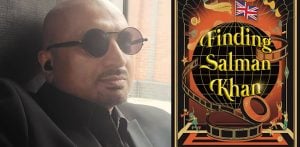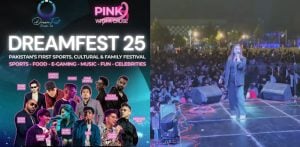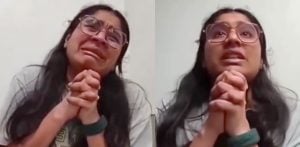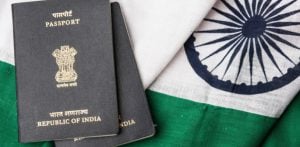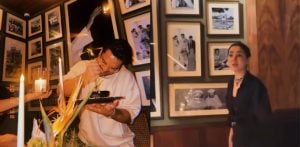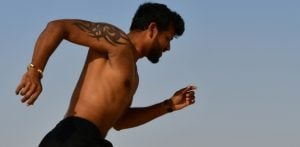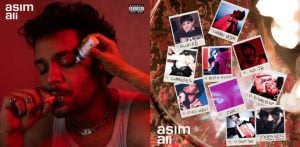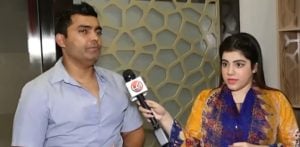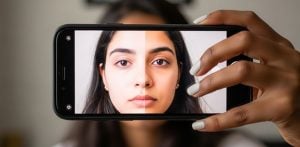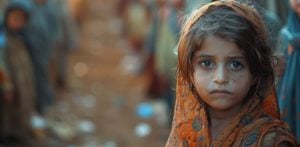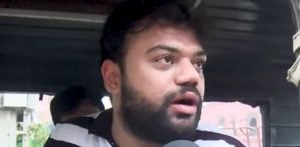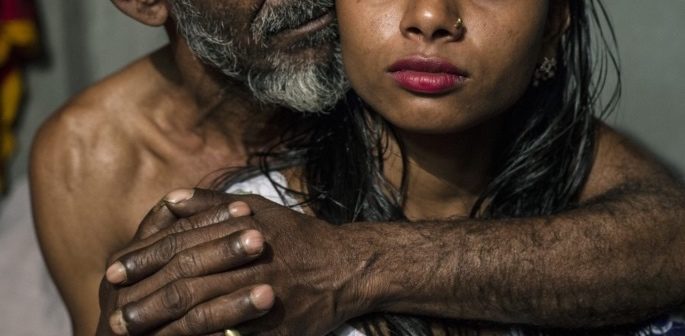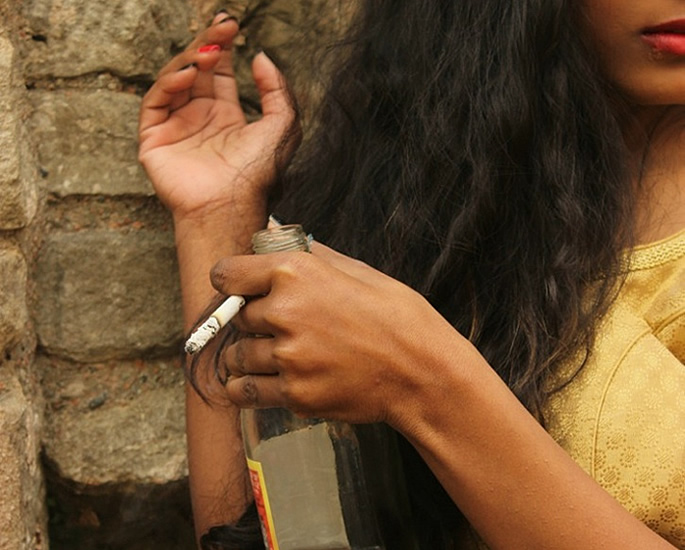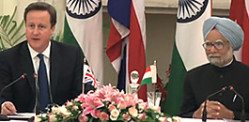The girls were raped up to 20 times a day
Children in India make up 40% of prostitutes. Out of the 3 million prostitutes in the country, children make up 40% of them. In fact, child trafficking is to blame for this shocking statistic.
This is due to the rise of ‘customer preferences’ which are demanding for the induction of young girls into prostitution.
Child trafficking is continuously growing in India, as it is a prevalent issue which has grown 14 times over the past decade, according to the National Crime Record Bureau (NCRB).
Every year, an estimate of 135,000 children is trafficked for commercial sex, involuntary domestic servitude, forced child labour, child soldiers and numerous other illegal activities.
In India alone, it is estimated 2 million women and children are used for commercial flesh trade in red-light districts.
In 2009, 1.2 million children were involved in flesh trade, according to the Central Bureau of Investigations.
Mumbai is the city which has one of the largest brothel industries, as there are approximately 1,000,000 sex workers.
Those women and children, subject to pornography and prostitution, have generated approximately 400 million US dollars, annually, in Mumbai alone.
Children in India are forced into labour which exceeds greatly the legal amount they are allowed to do. However, they are still severely underpaid and abused.
In fact, hundreds of thousands of girls are tricked into jobs but are abducted and trafficked to the urban areas to work as domestic helpers, where they are often sexually assaulted.
Trafficked children are becoming slaves and they are abused emotionally, physically and sexually. They are forced to work to pay family debts or are forced to become soldiers.
Numerous child soldiers are not only forced to commit illegal atrocities to communities and their own families, but they are often sexually abused. This causes the transmission of STDs and unwanted pregnancies.
The age of child soldiers is often 15 to 18, however, there are also children aged 7, 8, or even lower.
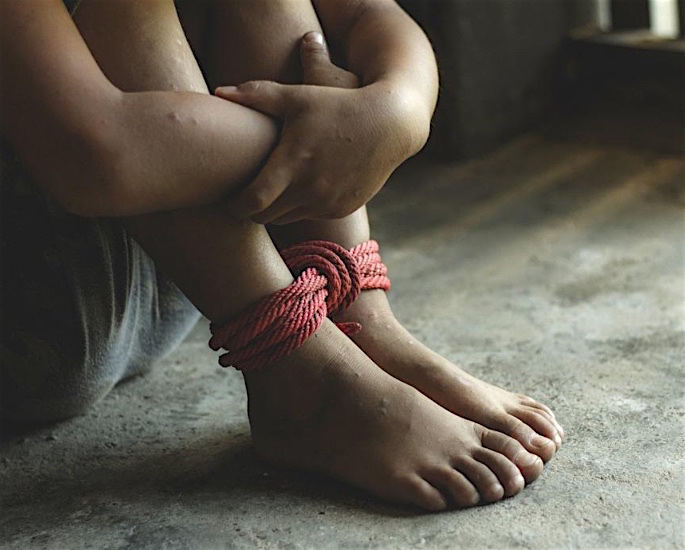
Children who are forced to become ‘beggars’ or are tricked into organ trades are often extremely injured and abused because vulnerable children who beg appear to be making much more money.
In fact, gangmasters have forcibly amputated their limbs, or they have poured acid into their eyes to render them blind, before forcing them in these illegal activities.
Between the hundreds of thousands of children which are victims of the flesh trade, a number of child sex workers have been rescued, yet their nightmare was not over.
Brothels from New Delhi and Agra have used bunkers and hidden passages to traffic girls from Bengal to Delhi, before selling them in local brothels.
A worker affirmed that these passages “are actually meant to deceive and hide”, therefore, “a person can get lost and then simply disappear”.
The horrible reality which hides behind those closed doors was revealed by the head of the Delhi Commission for Women, Swati Jai Hind, who asserted that those hidden cells are escape routes from police raids.
But the most blood-curdling thing is that those rooms hide minors – children who vanish, even though specific tip-offs have been given to the police about children being brought there.
Reports of trafficked minors, who are sold for flesh trade and are hidden in labyrinths, is rising more rapidly than expected.
“Urgent action is needed,” said Rishi Kant of the anti-slavery charity Shakti Vahini.
“The maze of rooms, the way deals are struck, and the plight of the women stuck here is frozen in time.”
A sex worker from one of the brothels said, as she applied makeup and got ready for clients, according to the Thomas Reuters Foundation:
“Nothing in this place has changed since I was brought here 20 years ago.”
Policeman Prabir K. Ball said that saving these trafficked girls, who often end up in the ‘GB Road’, the largest red-light district in New Delhi, was “like going to war”.
After hearing the testimony of rescued girls, the police were ordered to demolish these hidden labyrinths in the GB Road brothels.
However, “no action has been taken”.
The following are cases presented by human trafficking survivors. The names of the victims of the flesh trade have been changed for security purposes.
Sayeda
Sayeda was fourteen years old when her boyfriend took her on the other side of a river, illegally entering India.
Days later, her boyfriend told her she was going to work in a brothel, responding “I’ll kill you and dump you in the river” the moment she refused.
Sayeda said to have been so scared, that finally, she had to accept, imposing that she will only work as a dancer, nothing else.
However, that did not happen. Prasanta Bhakta was the man who ran the brothel, where dozens of other girls from different towns were held captive.
He immediately raped her, because according to the other girls, that was the way he assessed the prices the customers had to pay for their ‘services’ – by having sex with them.
Forced to drink alcohol to become more ‘pliable’, Sayeda began drinking heavily because she discovered that drinking would numb the trauma of becoming a sex slave. She said:
“That’s how I would pass the time – by drinking a lot through the day.”
And, the time she passed there, in that prison guarded by the same police that was supposed to protect her, were two long years.
The National Geographic, who interviewed Sayeda and numerous other flesh trade victims, wrote about this same case:
“Customers came in day and night, and the girls were raped up to 20 times a day.
“Even at 4 am, when the girls were desperate to get some rest, drunk men would stumble into the rooms where they were sleeping to choose one.
“The girls took painkillers to endure the physical torment, but the emotional suffering was inescapable. After weeks and months of such abuse, they would become numb to it, almost.”
In April 2017, the police team who raided the brothel succeeded in arresting Bhakta and saving Sayeda, together with 19 other girls and women from that earthly hell.
Monali
Monali was thirteen years old when she was going to be sold as a child bride, after being kidnapped and trafficked from her hometown in Medinipur District to the Kalahandi district.
However, after being abused, tortured and raped by the trafficker, Monali found the courage to escape from that tormented life.
The day of her escape, the terrified child was found in a local market by a driver, who did not hesitate to bring her to the police station.
Afterwards, the anti-trafficking organisation Suchetana Mohila Mondali had talked to her and managed to bring her home, where her family was.
But the family refused to accept her.
Victims of human trafficking and the flesh trade, who are often abused, find reintegrating into their community very difficult because they are usually not welcomed by their own families.
This is due to the social stigma attached to the abuse the flesh trade victims have experienced, although involuntary.
Monali now lives in a government shelter home.
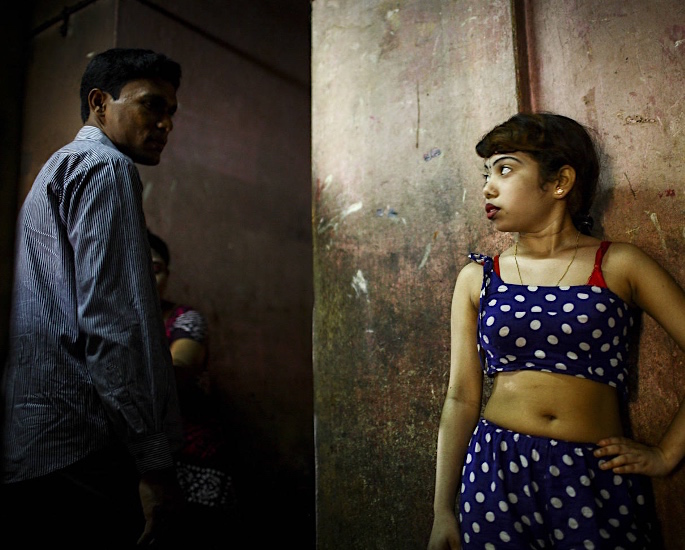
Trishna
Trishna was fourteen years old when a trusted boy sold her into commercial sexual exploitation in a city where she did not speak the language.
Forced to dance at sex parties for more than half of the year, she was held captive, threatened and tortured.
The day she was found and saved, was thought to be the end of that hellish nightmare. However, that was not the case.
The nightmare that followed her steps home has revealed the sad reality in which numerous survivors of the flesh trade have to live in, long after they have been rescued.
Trishna dropped out of school and spent three years in a chaotic environment before the NGO contacted her and provided her with healthcare and financial assistance.
Her testimony was published by Freedom United, who wrote:
“People said hurtful things, like how we should have killed ourselves instead of coming back. The fact that the blame and the shame were put on us and not the survivors was devastating. […]
“The whole village turned up and blamed us. In school, kids used to tell others, ‘No, don’t hang out with them. They did this kind of work and they’ll take you away with them too’.”
However, things have finally changed.
Trishna is now a co-leader of the Indian Leaders Forum Against Trafficking, a coalition dedicated to the insurance that future survivors across India will live without the social stigma she had to face.
“Today, I don’t look at myself as a survivor. I’m a leader. I have the right to not be defined by my past and that’s how everybody’s story should be.”
Tina
Tina was fourteen years old when her father reported her as missing. As well as many other victims of the flesh trade, Tina was led away by a trafficker with the hope of working in a big city.
The interviewed friends stated that Tina used to spend her time speaking with a boy named Rajan, and when a taxi driver had recognised her, his testimony adhered to that information.
After tracing an unexpected phone call to her grandmother, the police found that Tina was in Delhi. The local police were informed about the case and conducted a raid, rescuing her.
The General Secretary of the Mankind in Action for Rural Growth (MARG), Mr Nirnay, spoke about Tina’s case, saying:
“Today 21 people are behind bars in this case. However, we are not always this fortunate.
“In most cases by the time we are able to track the location of the girl, she has already been sold several times and we have lost all track of her.”
In fact, Mr Narney believed that her story was one of the few where the enforcements were able to save a trafficked girl. He admitted, in his report, that “this case haunted me.”
1956 Immoral Traffic Prevention Act
In 1956, the Immoral Traffic Prevention Act was introduced for the prevention of immoral trafficking in premises where people engage in sexual activity with prostitutes (brothels).
The Act entails, without the mention of 1. and 2., that:
- Punishment for keeping a brothel or allowing premises to be used as a brothel.—
(1) Any person who keeps or manages, or acts or assists in the keeping or management of, a brothel shall be punishable on first conviction with rigorous imprisonment for a term of not less than one year and not more than three years and also with fine which may extend to two thousand rupees and in the event of a second or subsequent conviction, with rigorous imprisonment for a term of not less than two years and not more than five years and also with fine which may extend to two thousand rupees.
(2) Any person who—
(a) being the tenant, lessee, occupier or person in charge of any premises, uses, or knowingly allows any other person to use, such premises or any part thereof as a brothel, or
(b) being the owner, lessor or landlord of any premises or the agent of such owner, lessor or landlord, lets the same or any part thereof with the knowledge that the same or any part thereof is intended to be used as a brothel, or is wilfully a party to the use of such premises or any part thereof as a brothel, shall be punishable on first conviction with imprisonment for a term which may extend to two years and with fine which may extend to two thousand rupees and in the event of a second or subsequent conviction, with rigorous imprisonment for a term which may extend to five years and also with fine.
Therefore, 3. entails that any person, being in the roles mentioned in 3(2a), so in charge of the premises, which a) assists, or b) manages the brothel, shall be punished.
If first conviction, punishments include 1) imprisonment between at least 1 year to maximum 3 years, but also 2) maximum 2000 rupees fine.
If second or subsequent conviction, punishments include 1) imprisonment between at least 2 years to maximum 5 years, but also 2) maximum 2000 rupees fine.
Following 3., the Act entails, without the mention of 1. and 2., that:
- Punishment for living on the earnings of prostitution .—
(1) Any person over the age of eighteen years who knowingly lives, wholly or in part, on the earnings of the prostitution of any other person shall be punishable with imprisonment for a term which may extend to two years, or with fine which may extend to one thousand rupees, or with both, and where such earnings relate to the prostitution of a child or a minor, shall be punishable with imprisonment for a term of not less than seven years and not more than ten years.
(2) Where any person over the age of eighteen years is proved,—
(a) to be living with, or to be habitually in the company of, a prostitute; or
(b) to have exercised control, direction or influence over the movements of a prostitute in such a manner as to show that such person is aiding abetting or compelling her prostitution; or
(c) to be acting as a tout or pimp on behalf of a prostitute, it shall be presumed, until the contrary is proved, that such person is knowingly living on the earnings of prostitution of another person within the meaning of sub-section (1).
Therefore, 4. entails that, until proved otherwise, any person over the age of 18 who lives on the earning of:
a) any person over the age of 18, shall be punished with 1) imprisonment for maximum 2 years, and/or 2) 1000 rupees fine.
b) any person who is either a child or a minor, shall be punished with imprisonment for at least 7 years to maximum 10 years.
Following 4., the Act entails, without the mention of 1. and 2., that:
- Procuring, inducing or taking person for the sake of prostitution.— (1) Any person who—
(a) procures or attempts to procure a person whether with or without his/her consent, for the purpose of prostitution; or
(b) induces a person to go from any place, with the intent that he/she may for the purpose of prostitution become the inmate of, or frequent, a brothel; or
(c) takes or attempts to take a person or causes a person to be taken, from one place to another with a view to his/her carrying on, or being brought up to carry on prostitution; or
(d) causes or induces a person to carry on prostitution;
shall be punishable on conviction with rigorous imprisonment for a term of not less than three years and not more than seven years and also with fine which may extend to two thousand rupees, and if any offence under this sub-section is committed against the will of any person, the punishment of imprisonment for a term of seven years shall extend to imprisonment for a term of fourteen years:
Provided that if the person in respect of whom an offence committed under this sub-section,—
(i) is a child, the punishment provided under this sub-section shall extend to rigorous imprisonment for a term of not less than seven years but may extend to life; and
(ii) is a minor, the punishment provided under this sub-section shall extend to rigorous imprisonment for a term of not less than seven years and not more than fourteen years.
Therefore, 5. entails that anyone who either a) procures, or b) induces a person to carry on for the purpose of prostitution, shall be punished.
Punishments are more rigorous than when living on the earnings of prostitution and provided that the person being offended is either c) a child, or d) a minor, the offender shall:
- be punished with imprisonment from at least 7 years and may extend to life;
- be punished with imprisonment from at least 7 years and not more than 14 years.
As a matter of fact, the introduction of The Immoral Prevention Act has prevented many of the criminals who exploit children and women, from being free.
But the rates do not change.
Still, out of the 3 million confirmed prostitutes in India, 40% are children.
The flesh trade keeps on rising, and the number of trafficked children is greatly under-reported.
Human trafficking is a crime. To report in India, call:
- Shakti Vahini on +91-11-42244224, +91-9582909025
- The national helpline Childline on 1098
- Operation Red Alert: 1800 419


